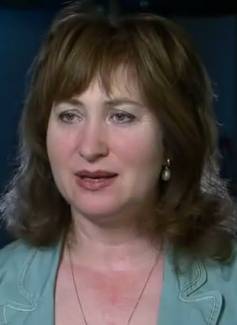
“My dream is that every disabled patient in Israel will believe that Hadassah is the best place for them,” relates Dr. Isabella Schwartz, head of the Department of Physical Medicine and Rehabilitation at Hadassah Hospital-Mount Scopus.
Born in Siberia, where her parents had been transferred from Kiev as children during the second World War, Dr. Isabella Schwartz came to live in Israel after she received her medical education. She began her medical residency at the Hadassah Medical Center, specializing in rehabilitation. “Hadassah is where I began my professional work,” she says, and “Hadassah became my second home.”
For Dr. Schwartz, rehabilitation medicine is a journey. As she explains, the approach to patients is comprehensive and holistic. The rehabilitation multidisciplinary team, comprised of rehabilitation physicians, nurses, physiotherapists, occupational therapists, speech therapists, psychologists, social workers, and a dietician, addresses all aspects of the patients’ needs—from the physical to the psychological to the social. The patient, the staff, and the patient’s family form a network, Dr. Schwartz explains. And they become a family.
By the same token, Dr. Schwartz notes that rehabilitation research “is always personal.”
The rehabilitation team investigates what specific interventions would be best to restore an individual patient’s mobility, as well as social and cognitive functioning. For example, she reports, the staff followed up with victims of terror and individuals who suffered traumatic injuries as a result of car accidents and the like. Their research revealed that victims of terror needed to be in treatment longer; they had more complications and more often experienced secondary effects—both physical and psychological. Consequently, the terror victims required follow-up for a longer time period.
One patient that Dr. Schwartz remembers vividly is a teenage terror victim. The young woman’s legs were terribly lacerated, with metal fragments lodged within them. She also suffered from multiple bone fractures. The teen endured more than 10 surgeries. “Hadassah’s orthopedic and vascular surgeons saved her life,” Dr. Schwartz reports. When she arrived in the rehabilitation unit, however, she was totally distraught. Her spirit, Dr. Schwartz notes, was destroyed. In the beginning, she could not move her legs. But, slowly, she progressed—despite developing post-traumatic stress syndrome. Eventually, she returned to school and got her master’s degree. She also got married. “Every year,” Dr. Schwartz reports, “she comes to Hadassah to thank us.”
Hadassah’s successes “have an impact on terror victims around the world,” says Dr. Schwartz, “because we publish our findings.”

The rehabilitation department also analyzes the impact of robotic gait devices on patients who are struggling to walk. The team has found, for example, that the Lokomat (a robotic system which includes a harness, a specialized treadmill, and a mechanical system that moves the patient’s legs), in combination with traditional physical therapy, has helped patients who have severe difficulty walking independently. Stroke victims, individuals with multiple sclerosis, and those with spinal cord injuries, who were not able to walk at all before treatment, can now walk by themselves.
One young woman who has benefited from the gait laboratory was a victim of a brain hemorrhage. When she was transferred into the rehabilitation unit, she could neither move nor communicate, except with her husband through small gestures or eye movements. With the help of Hadassah’s rehabilitation team, one year later she was able to speak. Her walking ability, however, was still very limited. Following many assessments and treatments, including injections to reduce spasticity and the use of an orthodic brace to help her put weight on her leg, she was still unable to walk by herself. She then received further evaluation in the department’s gait laboratory. It was decided that she needed another surgery to correct her tendons and muscles to enable her to put sufficient weight on her legs. She is now walking independently!
Dr. Schwartz’ dream is to create specific programs for each chronically disabled population, such as those with cerebral palsy. Her goal is to be able to assess their needs and create personal plans to restore their abilities. To date, Hadassah has developed three such programs—a center for post-polio patients, a center for multiple sclerosis patient rehabilitation, and the gait laboratory. “With the help of Hadassah’s donors,” she notes, “I believe we can help all disabled people in Israel.”
Currently, the rehabilitation department cares for 450 inpatients annually and 100 patients every week in its day care program. “Rehabilitation medicine is unique,” Dr. Schwartz comments. “It is more than medicine.”
